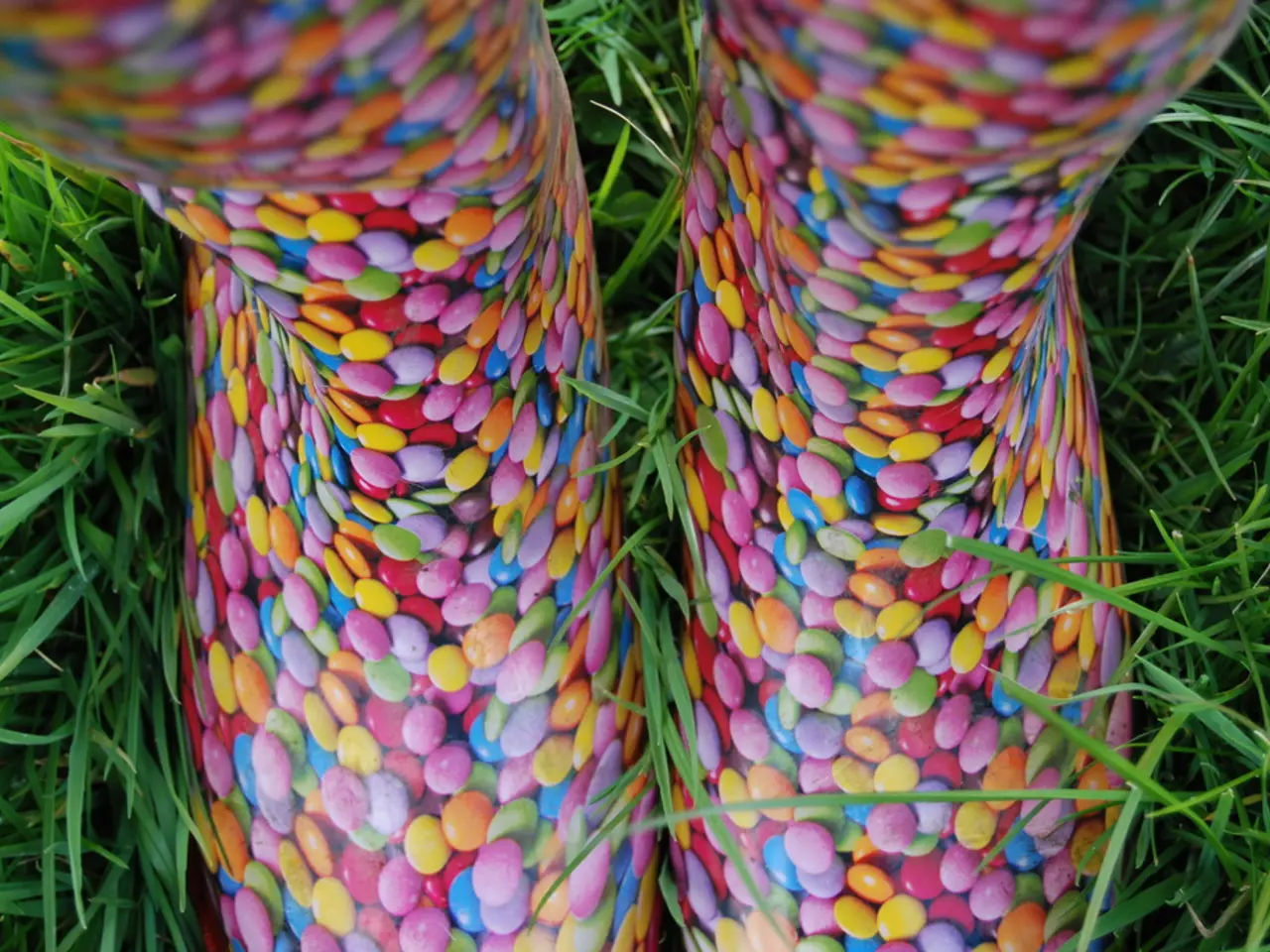Utah's Fabled Red Beryl Stones: Natural Gems Discovered in the USA
In the remote and picturesque Wah Wah Mountains of Utah, lies a gemstone that is as rare as it is beautiful – the red beryl. This captivating gemstone, with its vibrant red hue, is a unique member of the beryl family, known for its more common counterparts, such as emerald and aquamarine.
First discovered in 1904 by Maynard Bixby, a bookkeeper turned prospector, the gemstone was initially named 'bixbite' in his honour. However, due to confusion with other minerals, the name was later discredited, and 'red beryl' became the preferred term[3].
Red beryl forms under exceptionally rare geological conditions. Unlike other beryls, it is primarily associated with topaz-bearing rhyolitic volcanic rocks rather than granite pegmatites[1][3]. Its distinctive red color is attributed to trace amounts of manganese in its crystal structure, differentiating it from the green of emerald (chromium/vanadium) and blue of aquamarine (iron)[2].
The formation process is incredibly rare, requiring the presence of manganese and beryllium under specific temperature and pressure conditions. This rarity makes red beryl one of the rarest gemstones globally, with almost all known occurrences found in the Wah Wah Mountains of Utah, and only a few other discoveries worldwide[3].
Since its discovery, red beryl has been prized by collectors but remains extremely scarce in the jewelry market due to its rarity. Its scarcity and the limited geographic occurrence in the U.S. add to its value and mystique.
In 1958, a second occurrence of red beryl was discovered by Lamar Hodges in the same region. The Harris family purchased the rights to mine the property where Hodges found red beryl in 1978. The Kennecott Exploration Company (KEC) leased the mine from the Harris family in 1994 to explore the possibility of larger-scale mining of red beryl[4].
Red beryl is found in areas of hydrothermal alteration, with clay minerals like kaolinite sometimes marking its concentration. Chemical alteration along the fractures occurred after the formation of the red beryl as the fluids cooled[5].
The article, 'One Nation, Many Gemstones', published in Gems&Jewellery Vol. 29, No. 1, discusses red beryl and other gemstones. For those interested in learning more about coloured gemstones, the Gem-A Gem Hub offers additional information. Meanwhile, JTV provides images of faceted red beryl, offering a glimpse into the stunning beauty of this rare gemstone.
In conclusion, red beryl is a uniquely rare red gemstone from the beryl family that forms in manganese-rich volcanic environments primarily in Utah, United States, discovered in the early 1900s and notable for its distinctive red color and scarcity[2][3]. Its rarity, coupled with its striking appearance, makes red beryl a gemstone that continues to captivate gem enthusiasts worldwide.
[1] Geology.com. (n.d.). Red Beryl. Retrieved from https://www.geology.com/minerals/red-beryl.shtml [2] GIA. (n.d.). Red Beryl. Retrieved from https://www.gia.edu/red-beryl [3] National Geographic. (2017, March 1). The Rarest Gemstone in the World. Retrieved from https://www.nationalgeographic.com/travel/destinations/north-america/united-states/utah/red-berry-national-park/ [4] Kennecott Exploration Company. (n.d.). Red Beryl. Retrieved from https://www.kenco.com/minerals/red-beryl/ [5] Gem-A Gem Hub. (n.d.). Red Beryl. Retrieved from https://www.gemagemhub.com/gem-encyclopedia/red-beryl/
- To delve deeper into learning about red beryl and other coloured gemstones, one can refer to the article 'One Nation, Many Gemstones' published in Gems&Jewellery Vol. 29, No. 1.
- For those intrigued by the science behind this unique gemstone, a diploma or foundation course in gemmology might be of interest.
- Due to red beryl's rarity, it's scarce in the jewelry market but often depicted in the lifestyle and home-and-garden sections of travel magazines, such as shopping for home decors with a touch of gemstone elegance.
- In the gemstone industry, the value and mystique of red beryl are not only due to its scarcity but also its association with the environmental-science aspects of hydrothermal alteration and clay minerals like kaolinite.
- When it comes to exhibiting the beauty of red beryl, specialized technology is employed, showcasing the faceted gemstone in high-definition images on platforms like JTV.
- In addition to jewelry, red beryl's vibrant red hue has found its way into the realm of business and technology, possibly being used in innovative applications, such as digital displays or fashion tech accessories.
- The allure of red beryl extends beyond just gem enthusiasts; it also captivates the imagination of finance investors, as its rarity makes it a potential financial asset in the world of investing in precious stones.




